Sure, every cuisine has popular recipes… the ones whose appeal to the local people separates them from the rest of the pack. The ones who, after generations of word-of-mouth and individual adaptations, have countless people claiming they make the best there is.
But, amid our search into the fun and popular recipes around the world, seldom have we found one that’s reached the level of alloco.
What could we possibly mean by that? And on what basis can we stake our own claim?
You’ll see soon enough.

Alloco and the Allocodrome
Before revealing why alloco wins our arbitrary “recipe popularity contest,” it’s interesting to point out that it’s not really a standalone dish itself.
Stripping it down to its fundamentals, alloco itself is very simply (and somewhat blandly) fried plantains. Granted, plantains are a staple crop throughout much of Western Africa, but it would still be hard to imagine that a recipe of simple fried plantains would be as ubiquitous as it is.
What really rounds out the alloco experience, however, is what it is served with. Generally, alloco is served as an accompaniment to either a larger meal or another corresponding snack. Two of the more common foods you’d see side by side with alloco are a freshly grilled fish and/or some boiled eggs. Then, on top of the alloco itself is a spicy and powerful sauce de piment to liven up the flavors of the plantains and more.
Coupled with a full meal, alloco is hugely popular not only throughout the Ivory Coast but also in neighboring countries as well. Benin and Nigeria both have a fried plantain dish called dodo, Ghana has kelewele, Togo has amadan, and Congo has makemba.
For the Ivorians, the name alloco (or aloko) gets its name from the Baoulé – a large Akan ethnic group in the Eastern Ivory Coast – word for loko that signified when a plantian was ripe.
The Allocodrome
Now, as to why alloco is so incredibly popular: it has its own namesake locale!
Located in the relatively upscale Cocody district of Abidjan, the Ivorian capital, the Allocodrome is an open air space space where locals go to enjoy some great Ivorian food, some great company and – most often – some good people watching.
The Allocodrome was birthed in the mid-80s around a site where street vendors (mostly women) were already selling alloco as a snack to passersby. Fast forward a few decades, and it has become a bustling and lively hub for pretty much any sort of social situation.
Of course, you can find alloco all over the place, but you’ll also be able to find other Ivorian foods like attieke or kedjenou in case you’re looking for something a little lighter as well.
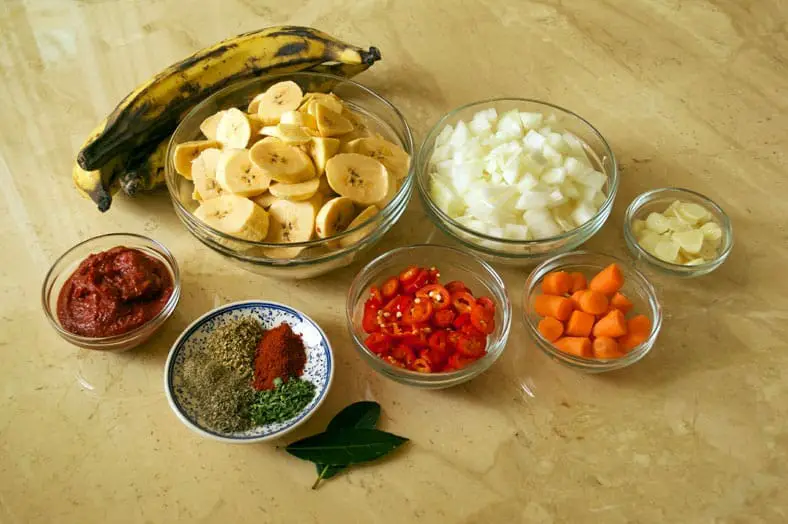
About the Recipe
As we mentioned earlier, the alloco recipe itself – if you wanted to strip it down to what it fundamentally is – is nothing more than plantains fried in oil. To make alloco right, though, you need to be sure you’ve gotten the right type of plantain.
Getting the Right “Ripe Type” of Plantain
Over the lifecycle of a plantain, it goes into four different stages of ripeness. First, the plantain goes into a green stage, where it’s not ripe yet and fairly hardened and starchy. The firm texture of green plantains make it great for preparing more staple recipes like the Belizean fufu alongside hudut.
Next, the plantain starts to “semi-ripen” as it turns more yellow than green. Here, the plantain isn’t fully ripe yet, and it begins to take on a bit of a sweeter texture. Another pretty useful characteristic for identifying semi-ripe plantains are that they start to have black spots around the plantain’s peel, but they’re not everywhere.
After semi-ripeness, the plantain fully ripens and its taste sweetens to a point similar to a banana. The outer skin starts to transition from a goldenrod yellow to a darker brown, and you’ll find more and more blackened spots around the peel as well. These types of plantains are great for sweeter plantain dishes and for molding into different shapes and styles (i.e. plantain balls).
Finally, you’re at the very ripe stage. The skin is completely blackened, and you would presume that the plantain inside is no longer any good, but you’d actually be wrong! Here, the plantain is still good, and it’s become extra sweet and mushy. So long as you remove it from its withering skin in time, a very ripe plantain can be used to make delicious pudding desserts and anything else that might be a little softer in texture.
For alloco, we found that the best type of plantain was one that teetered in between the semi-ripe and the ripe stages. It’s generally better to veer a little more towards the semi-ripe stage so that you don’t accidentally make a fried plantain dessert, but it’s definitely a good sign to find a plantain with blackened spots and a yellowish skin to use for your alloco.
The Sauce
While alloco is a very simple fried plantain dish, the key lies in its accompanying sauce. There are different ways to call this sauce – pili pili or sauce de piment – but the underlying principle is the same.
The stars of the show for the sauce are its chili peppers. Other key ingredients include onions, garlic and a created tomato sauce from tomatoes, liquid (i.e. water), and additional herbs and spices.
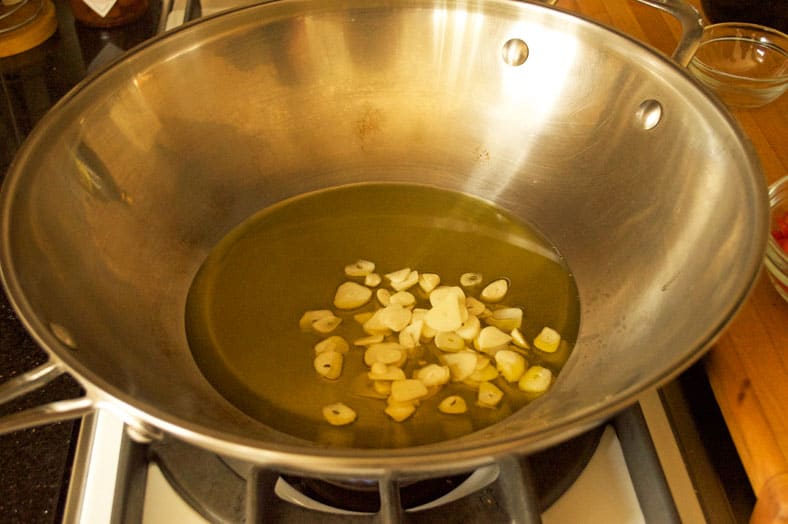


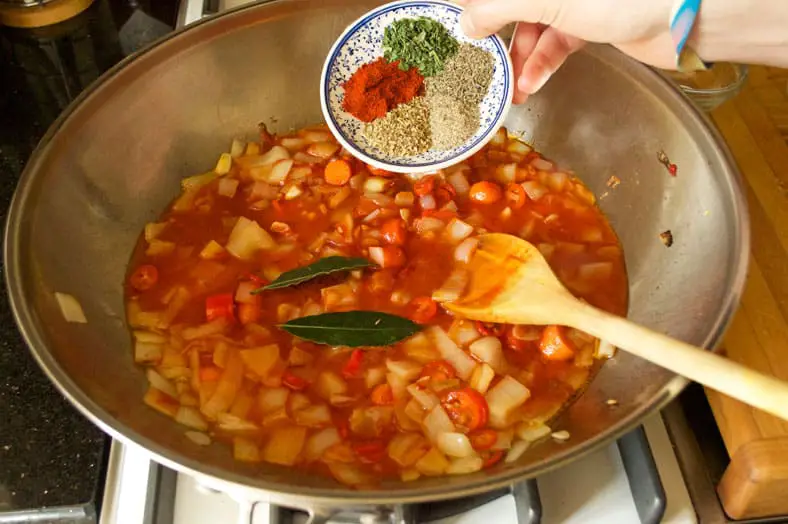
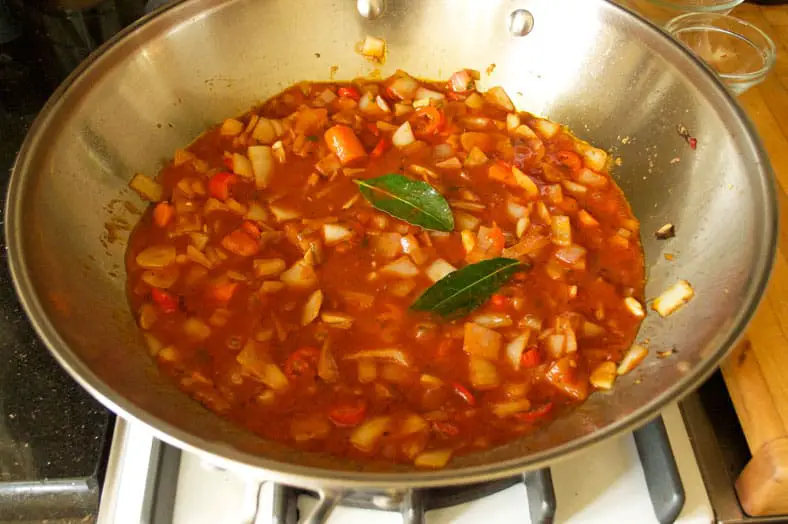 The sauce is supposed to be in a smooth puree type of consistency, but you want to first cook all the flavors together beforehand. The easiest way to do this is to put up a stockpot with your ingredients, simmer them for ~20 or so minutes, then take off the heat and puree in a blender or a food processor.
The sauce is supposed to be in a smooth puree type of consistency, but you want to first cook all the flavors together beforehand. The easiest way to do this is to put up a stockpot with your ingredients, simmer them for ~20 or so minutes, then take off the heat and puree in a blender or a food processor.
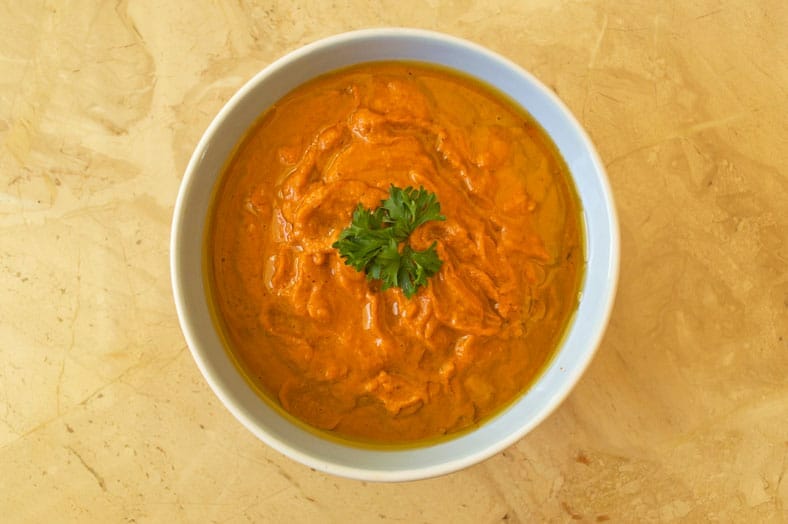 What comes out is a perfect accompaniment to your alloco… and any other delicious snack that makes its way onto your plate.
What comes out is a perfect accompaniment to your alloco… and any other delicious snack that makes its way onto your plate.
Our Take on the Recipe
More an interesting point to note than anything else, but many of the alloco recipes we came across overlooked the other components that make the dish so popular.
For our version, however, we didn’t want to do that. From our vantage point, it’s crucial to have, at the very least, the two most important components in a “package deal” together: the alloco and the sauce. What you’ll see below, then is a mash-up from a root alloco recipe and an original sauce de piment.
For the alloco, we made a fairly drastic adjustment in one of the key areas of the recipe: the frying oil. Depending on where you are in the Ivory Coast, you’ll either see alloco fried in peanut oil (generally in rural areas) or in red palm oil (in more urban places). Frying your alloco in red palm oil adds a special color and additional flavor to it as well.
For us, though, we adjusted the recipe to use neither, instead using coconut oil for frying. This is based on our belief that coconut oil is a generally healthier oil to use, and it’s a fantastic oil for getting a nice, even fry on your alloco (like it did for our Brazilian acaraje).

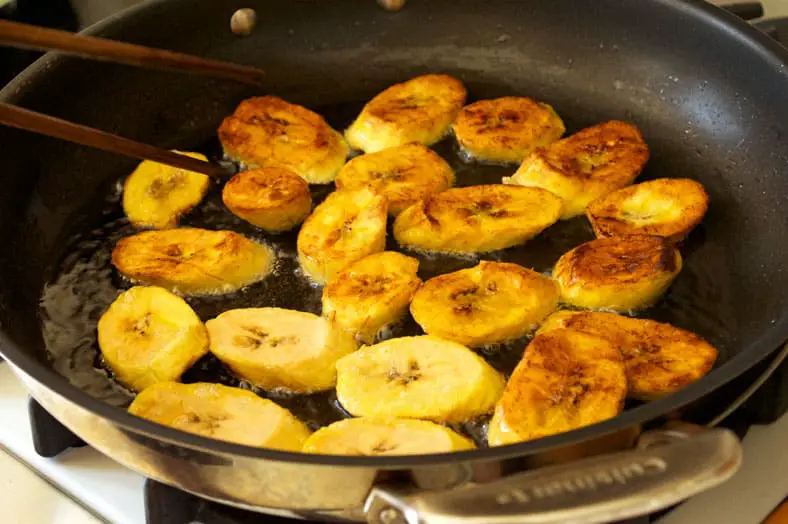 Outside of that, there’s not too many more adjustments that were needed for the alloco, but we did also make a few adjustments to the pepper sauce. Based on the root recipe, we added a carrot into the mix for another vegetable flavor, and we were very generous in adding spices where the original was not. You can hardly go wrong when adding cayenne, paprika powder and oregano to a spicy sauce.
Outside of that, there’s not too many more adjustments that were needed for the alloco, but we did also make a few adjustments to the pepper sauce. Based on the root recipe, we added a carrot into the mix for another vegetable flavor, and we were very generous in adding spices where the original was not. You can hardly go wrong when adding cayenne, paprika powder and oregano to a spicy sauce.
All in all, though, alloco is an absolute breeze to make and, when accompanied with a good sauce and another dish, makes for a winning midday meal combination.
And if you ever find yourself in Abidjan, you’ll know where to go for some high-quality alloco and fun!
What do you eat with your alloco? Comment below!



I love plantains – this is definitely my type of dish!!!
Awesome to hear, Mireille! Let us know when you have a chance to make it 🙂
Wow, I’m used to plain fried plantains. Can’t wait to try it!
Let us know how it goes for you, Michelle! 🙂
Love fried Plantains! It’s a favorite snack in the Philippines, too. That sauce looks delish!
That’s awesome, Manila Spoon! What’s the snack called in the Philippines? And is there any sort of sauce that goes with it?
It’s called Turon but there’s no sauce. 🙂
Just had a look and it looks like an amazing recipe, though! I’m guessing the sauce is so good it’s not really needed 🙂
thank you for the great read, and useful information about plantains – I love them, and yet I have only cooked with them three times. this recipe sounds outstanding!
Thanks, spabettie! Yeah.. learning about how plantains act differently over their lifespan was super helpful for us to learn as well. When you get around to trying the recipe, let us know!
Cyrus, I’m yet to try plantains in this form- They aren’t very popular in Australia but now I’m in America, I’m going to get my hands on one and try this out!
First, welcome to the US of A, Arman! They’re pretty easy to find here, so you’ll definitely have to try it out! Let us know how it goes for you if you do 🙂